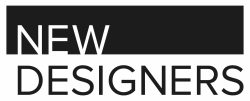We all know that graduating from university can be daunting, which is why Cass Art, the UK’s leading art supplies retailer, regularly provides advice and top tips from industry professionals. Here is an interview with Cass Art Student Ambassador Jeeba Marri and renowned British designer and illustrator Jessica Russell Flint, who produces a variety of boldly illustrated products, ranging from silk scarves to cushion covers.
Hi Jessica! Can you tell us a bit about your background? How did you get into the design business?
I was a bit weird in that I studied Geography at Exeter University for my degree. After school I knew I’d never go back to the books if I didn’t do it straight away but I knew I’d always go back to art. I come from a very artistic family so it’s more second nature than business. After university, I worked in advertising for around eight years before going full time with the business, selling my artwork initially before developing a range of products based on the artwork.
What inspires your designs?
I’ve always loved animals and character. I’m fascinated by the personality traits of people and animals. I think it’s inspired the way I approach drawing. I draw the basic animal shape and then weave in patterns and layers of print to bring out the character.
Your work is made up of many bright and bold colours. What’s your favourite colour?
Red. I love primary colours – although I get a lot of stick for this so I try to avoid using them too much in my work. I’m an Aries, which is a fire sign. I found out recently it’s quite common for Aries to favour red.
What advice would you give aspiring designers?
Never give up – if you really want it, you will achieve it. Keep practicing, become obsessive. If you’re not waking up early before other commitments to draw and design then you’re not right for it. Find your style. You need to work out where you sit in the design world – do you want to do commercial pattern, menswear, children’s illustration, book design? There are so many different avenues. Try to find out what you see yourself doing and envisage yourself there. I was once told that if you imagined where you would be in ten years’ time, and you kept that vision all the time, you’re most likely to achieve it.
Can you tell us about your process of designing? Do you sketch your ideas or do you prefer to work digitally?
100% sketch. All my work is hand drawn from scratch and initially forms a piece of artwork. If we decide that the piece is going to work as a print or pattern, we scan it and manipulate digitally for textile use.
What are your favourite art materials to use?
Ink and gouache paint. I love messing around with textures to create difference and structure in the work.
Do you have a favourite print?
The Dead Dodo Family is my favourite by a long way. For me, it’s so weird to think of a planet before us with now extinct creatures dominating the landscape and interacting. The Dead Dodo Family captures the essence that there was once a family of dodos living right where we are now. It’s sad, but also amazing to think about how we exist.
Are there any visual artists and designers whose work you admire?
I’m a huge fan of Egon Shiele.
How has your work evolved since you began your own label?
I have less time to spend on the art and more to spend on the design and print side. It’s definitely become neater – which may not be a good thing! I try to spend an hour or so at bedtime or first thing in the morning looking through magazines, books and the internet for inspiration. I think I’ve maintained my style, but perhaps the way I work with print has developed and how I incorporate background patterns.
What’s the story behind your motto ‘see beyond the end of your nose’?
I’ve always been a big one for making sure we see the bigger picture and not making a ‘mountain out of a molehill.’ It’s important to appreciate what’s going on around you – not being introverted, not following the crowd. I have always loved the saying ‘can you see beyond the end of your nose?’ It’s humorous but holds great importance in how we conduct ourselves.



